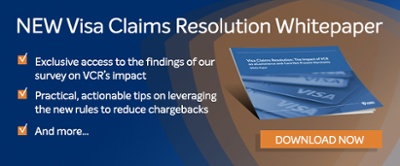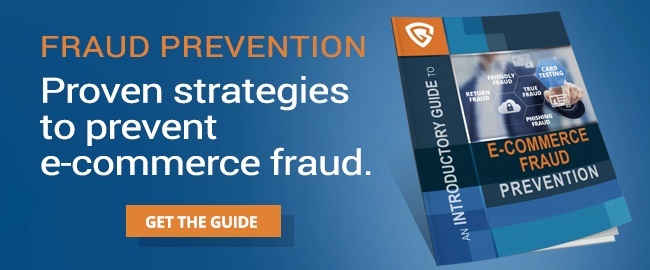Fraud Alerts: A New Nemesis for Digital Merchants
The holiday season is fast approaching, and for many digital merchants that’s a time for high traffic, heavy sales volume, and a big revenue boost. However, there is a certain list you could end up on if you’re not careful, one that could put quite a damper on your holidays—and this year, the owner of that list is changing the rules so that it’s easier to get on it than ever. You’d better watch out, merchants—Visa is lowering the thresholds for inclusion in its fraud monitoring programs.
 In fact, Visa maintains three separate monitoring programs: the Visa Fraud Monitoring Program (VFMP), the Visa Chargeback Monitoring Program (VCMP), and the Visa Acquirer Monitoring Program (VAMP). The purpose of these programs is to help merchants and banks that incur high rates of fraud and chargebacks reduce those occurrences and minimize their impact on consumers and other participants in the online payments ecosystem.
In fact, Visa maintains three separate monitoring programs: the Visa Fraud Monitoring Program (VFMP), the Visa Chargeback Monitoring Program (VCMP), and the Visa Acquirer Monitoring Program (VAMP). The purpose of these programs is to help merchants and banks that incur high rates of fraud and chargebacks reduce those occurrences and minimize their impact on consumers and other participants in the online payments ecosystem.
A laudable goal, but for merchants who get forcibly enrolled in these programs, it means costly fees as well as extra work to develop and follow a dispute mitigation plan with their acquiring bank. As part of their contractual agreements with Visa, merchants who exceed a certain rate of fraudulent charges or disputes are automatically placed in the appropriate monitoring program.
How Visa Determines Who Qualifies
Visa looks at the total number of disputes a merchant receives each month, along with how many of those disputes have fraud-related reason codes attached, to assign a point score for their fraud and chargeback activity.
These are the old thresholds for mandatory enrollment in a fraud monitoring program, and the new ones going into effect as of October 1, 2019:
|
Program |
Old threshold |
New threshold |
|
VFMP |
100 |
90 |
|
VCMP |
100 |
90 |
|
VAMP |
100 |
75 |
VFMP and VCMP both have “standard” (eight month) and “excessive” (twelve month) programs, depending on your fraud and chargeback volume.
While going through the VCMP program, merchants can expect to pay fees of at least $50 per chargeback, along with a $25,000 review fee at the end of the program. Merchants in the standard VFMP aren’t subject to additional fees, but may be automatically assigned liability for fraud chargebacks. In the excessive VFMP, merchants pay escalating five-figure non-compliance fees for every month in which they exceed their allowable fraud threshold.
 Merchants who fail to bring their fraud and chargeback ratios to acceptable levels may be required to extend their participation in these programs, or worse, lose their ability to process Visa card payments. Considering how ubiquitous Visa cards are, this is a fate that merchants should avoid at all costs.
Merchants who fail to bring their fraud and chargeback ratios to acceptable levels may be required to extend their participation in these programs, or worse, lose their ability to process Visa card payments. Considering how ubiquitous Visa cards are, this is a fate that merchants should avoid at all costs.
The New, Lower Thresholds
The specific thresholds for both tiers are also going to change in October 2020:
- VFMP Standard: $75,000 in fraud activity and a 0.9% fraud-to-sales ratio
- VFMP Excessive: $250,000 in fraud activity and a 1.8% fraud-to-sales ratio
- VCMP Standard: 100 disputes and a 0.9% disputes-to-sales ratio
- VCMP Excessive: 1,000 disputes and a 1.8% disputes-to-sales ratio
VAMP’s thresholds are a little more complicated, but their program has only the single tier. Acquiring banks get sent to VAMP if they meet both of the following criteria:
- $500,000 in fraud activity and/or 750 disputes
- A 0.75% ratio of either fraud-to-sales or disputes-to-sales
It all seems fairly straightforward, but let’s look a little more closely at that “fraud-to-sales” rate and how Visa calculates it.
Visa comes up with this rate by comparing the dollar amount of your monthly fraud transactions with your total sales in dollars (and USD settled currency) for that month. This begs the question: how does Visa know how to quantify how many of your transactions count as fraud? They count all disputed transactions that were assigned a “fraud” reason code by the cardholder’s issuing bank.
Merchants, do you see the problem here?
Much of this “fraud” isn’t fraud at all—that’s just what the cardholder is claiming. Payments Education Forum estimates that as many as 85% of these disputes are actually friendly fraud, not activity from stolen or compromised credit cards.
Early Warning Notifications
To prevent merchants from being completely blindsided by their inclusion in VFMP or VCMP, Visa sends out early warning notifications when merchants hit certain fraud or chargeback benchmarks on the way to exceeding the standard program thresholds. When the new procedures go into effect in October, Visa will send these notifications to merchants’ acquiring banks on a monthly basis.
Early warning notification alerts go out when the following numbers are reached:
- VFMP: $50,000 in fraud activity and a 0.65% fraud-to-sales ratio
- VCMP: 75 disputes and a 0.65% disputes-to-sales ratio
Once again, acquirers have multiple ways to qualify for VAMP (lucky them):
- $250,000 in fraud activity and/or 375 disputes
- A 0.45% ratio of either fraud-to-sales or disputes-to-sales
If you’re curious about your fraud rate and how close you might be to triggering an alert, your acquiring bank or payment processor should be able to provide you with data showing how many of your transactions have been reported as fraud.
Conclusion
To avoid placement in Visa’s costly fraud monitoring programs, merchants need to try to keep their fraud and dispute levels to the absolute minimum, which of course is a goal they should want to pursue anyway. Friendly fraud should be of particular concern to merchants who are approaching their thresholds, as this type of fraud cannot be prevented or mitigated in the same ways that true fraud can.
Merchants who are struggling with friendly fraud claims should make use of the Visa Merchant Purchase Inquiry program, which allows them to circumvent chargebacks by communicating with issuing banks about disputed transactions before they can be officially counted and turned into chargebacks. There are also good business practices that can help reduce rates of friendly fraud: diligent recordkeeping, excellent customer service, and a willingness to flag and block repeat offenders.
Chargeback management companies can also be a powerful ally in this fight, as they will have the knowledge and experience needed to fight difficult friendly fraud disputes and can help merchants establish better policies and practices that can reduce future occurrences of such disputes.
Don’t let friendly fraud skew your fraud ratio and get you placed on Visa’s naughty list—with the right approach and analytics, you can identify the vulnerabilities in your business and protect yourself.
Thanks for following the Chargeback Gurus blog. Feel free to submit topic suggestions, questions or requests for advice to: win@chargebackgurus.com



